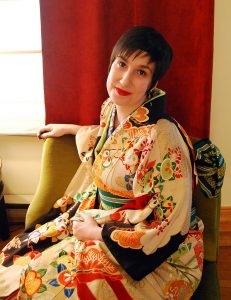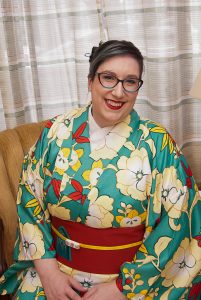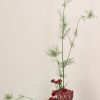My name is Diane, I am a woman with a passion for wearing and collecting vintage kimono. I’ve been studying kimono and Japanese traditional arts for half my life, and writing about it here for just over a decade. I’ve also been a moderator on the Immortal Geisha forums and Facebook group on and off for just as long. My learning is primarily self-driven, bolstered by occasional online courses. The internet has been an incredible resource and I’m happy to share any useful things I learn.
My favourite motifs are yabane, kiku, and anything with the 53 Stations of the Tokaido prints on them. My tastes tend to lean towards the large scale and bright colours of the Taisho and early Showa eras, and I love that these styles are coming back into vogue so I can now buy modern pieces with the same look and feel to them.
In this blog, I hope to catalogue my collection, share interesting information about special pieces, and record coordinations and outfits. If you want to know more about me or any parts of my collection, please don’t be shy to ask.
I also plan to discuss the challenges of collecting and wearing clothing made for the typical lithe Asian physique 50 to 100 years ago, when you have a western hourglass figure and are 5’10”, as well as review books I find interesting and relevant to the subject, and share tips and tricks for shopping online.
For health reasons, I don’t wear kimono nearly as frequently as I once did, but I still have a mannequin to dress, and will continue to discuss and review kimono, books, and traditional Japanese crafts. Eventually, I hope to be able to wear kimono regularly again, but until then I hope you will stick around!
A note on the name: “suki” means a love or strong fondness, so “kimono suki” (着物 すき) can be interpreted as “kimono love”. My nickname online is Moonblossom and typically shortened to “Moony”, and moon in Japanese is “tsuki” (月), so “kimono tsuki” (着物月) is a play on that. You may also see variations of “tsuki no hana” (月の花) or “tsukihana” (月花) scattered through out which is a literal translation of “flower of moon.” The proper word for a moonflower in Japanese is “yuugao” (夕顔) but I always thought tsuki no hana sounded nicer.

















 Bebe Taian
Bebe Taian CHOKO Blog
CHOKO Blog Gion Kobu
Gion Kobu